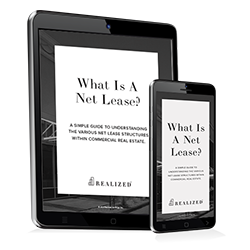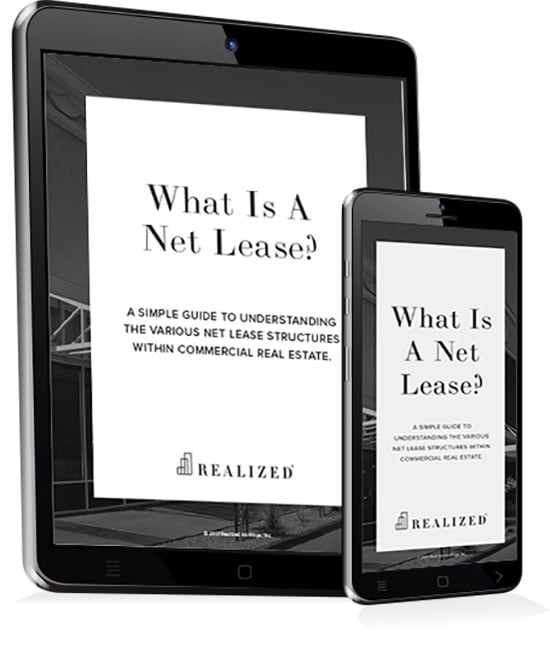
Acquiring and renting out an investment property means entering lease agreements with tenants. Those agreements range from gross leases (in which the tenant pays a fixed rent, and you pay all property operating costs) to a triple net lease (in which the tenant pays the fixed rent, plus insurance, taxes, and maintenance).
Then, there is the absolute net lease, in which the tenant takes on all property-related costs. You don’t pay anything.
While an absolute net lease can provide passive involvement in an investment property and a steady income stream, there are drawbacks to this type of arrangement. Understanding the challenges of an absolute net lease helps you determine if it’s the best investment move.
Delving Further into the Absolute Net Lease
Absolute net leases can be a popular option. As the property owner, you have minimal involvement and don’t have to kick in money to maintain the property. Conversely, an absolute net lease agreement means the tenant is responsible for all property expenses and maintenance. They can choose which insurance to use, how extensive capital improvements should be, and how to maintain the property.
An absolute net lease transfers the financial burden of managing the property from you to your tenant. In addition to the base rent, your tenant handles the following:
Net Operating Expenses
The definition of net operating expenses is broad but generally encompasses the following:
- Property Taxes: In an absolute net lease agreement, your tenant is responsible for municipal, state, or federal taxes.
- Insurance Premiums: Your tenant also selects and pays for property insurance. If you relied on financing to buy the property, it might be up to the lender to indicate the coverage needed.
- Maintenance Costs: Net operating expenses include maintenance costs to keep the property in good condition. Expenses might include repairs (fixing damaged flooring or leaky faucets), HVAC upkeep, pest control, exterior maintenance, and cosmetic upgrades.
Major Capital Improvements
Capital improvements improve the property’s value. Under the absolute net lease arrangement, your tenant takes on the costs of capital improvements. Such upgrades might include:
- Structural Repairs: These include foundation replacement, reconstruction of damaged walls, or roof replacement.
- Additions: Installing new plumbing or HVAC systems or adding more space to a building are considered capital improvements.
- Major Upgrades: This might include enhancing a property’s exterior (adding hardscapes, softscapes, and irrigation system), replacing doors or windows, and adding insulation and built-in appliances.
Property Damage
Depending on the absolute net lease agreement structure, your tenant will be accountable for any damage to your property. This might include damage from natural hazards (hurricanes, tornadoes, or wildfires) or man-made destruction, such as arson, terrorism, or negligence.
Absolute Net Leases and 1031 Exchanges
It’s possible to benefit from the combination of a 1031 exchange and absolute net lease, especially if you want to cut down on ownership duties. The like-kind exchange allows you to exchange a property used for investment or business purposes for another of equal or greater value. To fully defer capital gains taxes, investors must reinvest all proceeds.
One advantage of the exchange is the possible capital gains tax and depreciation capture referral. Another option is structuring an absolute net lease with the current or new tenant.
However, 1031 exchanges are complex, and the IRS has many rules to monitor these transactions and avoid abuse. The rules include using a Qualified Intermediary (QI) and adhering to strict timelines. Understanding the requirements for a successful like-kind exchange is important to ensure compliance.
Absolute Net Lease Advantages
As a property owner, the absolute net lease can provide these benefits:
Hands-off Involvement: An absolute net lease can remove most of your property ownership responsibilities. This could allow you to enjoy the potential income flow without day-to-day involvement in the property.
Predictable Income Stream: Absolute net lease agreements can offer a predictable and consistent cash flow without dedicating funds to net operating costs.
Long-Term Stability. Many absolute net lease terms can be 15 years or longer. As a result, you could have an income source for many years.
Less Risk Exposure. You might not be as exposed to increases in insurance premiums, maintenance costs, or market fluctuations through an absolute net lease arrangement.
Quality Tenants. Because your tenant has a high level of control over the property, an absolute net lease typically attracts highly credit-worthy tenants with a history of on-time rent payments.
Absolute Net Lease Drawbacks
Because absolute net leases provide your tenant with the operation of your property, this could generate the following issues:
No Control. You can’t decide on your property’s repairs, capital improvements, or rebuilding. If your tenant is neglectful or doesn’t perform deferred maintenance, your property’s value could deteriorate.
Re-Leasing Challenges. If your tenant defaults or breaks the lease, finding another tenant to take the space can be difficult. You then have to spend resources and time to find a new tenant. Additionally, during times of volatility, many corporate tenants can find it too risky to commit to an absolute lease agreement.
Rent Adjustment Difficulties. Your tenant pays a fixed rental rate for several years, with bumps to adjust for inflation. However, if inflation rises or market changes occur, you likely won’t be able to increase the rent in response, possibly meaning a lower-than-expected return on investment.
Wrapping it Up: Absolute Net Lease 101
Entering into an absolute net lease arrangement can help you enjoy a mostly hands-off management while potentially increasing the potential for steady income. However, there are challenges involved with this path, including no control over your property and difficulties in securing a replacement tenant should you decide to leave.
It’s a best practice to get advice and guidance from attorneys and other professionals if you’re considering an absolute net lease arrangement. Also, if you’re considering launching a 1031 exchange to obtain a property that lends itself to an absolute net lease structure, contact the experts at Realized 1031. The team offers decades of experience that can help you through the exchange process while remaining IRS-compliant.
For more information and to set up a no-obligation meeting, visit realized1031.com.
The tax and estate planning information offered by the advisor is general in nature. It is provided for informational purposes only and should not be construed as legal or tax advice. Always consult an attorney or tax professional regarding your specific legal or tax situation.



